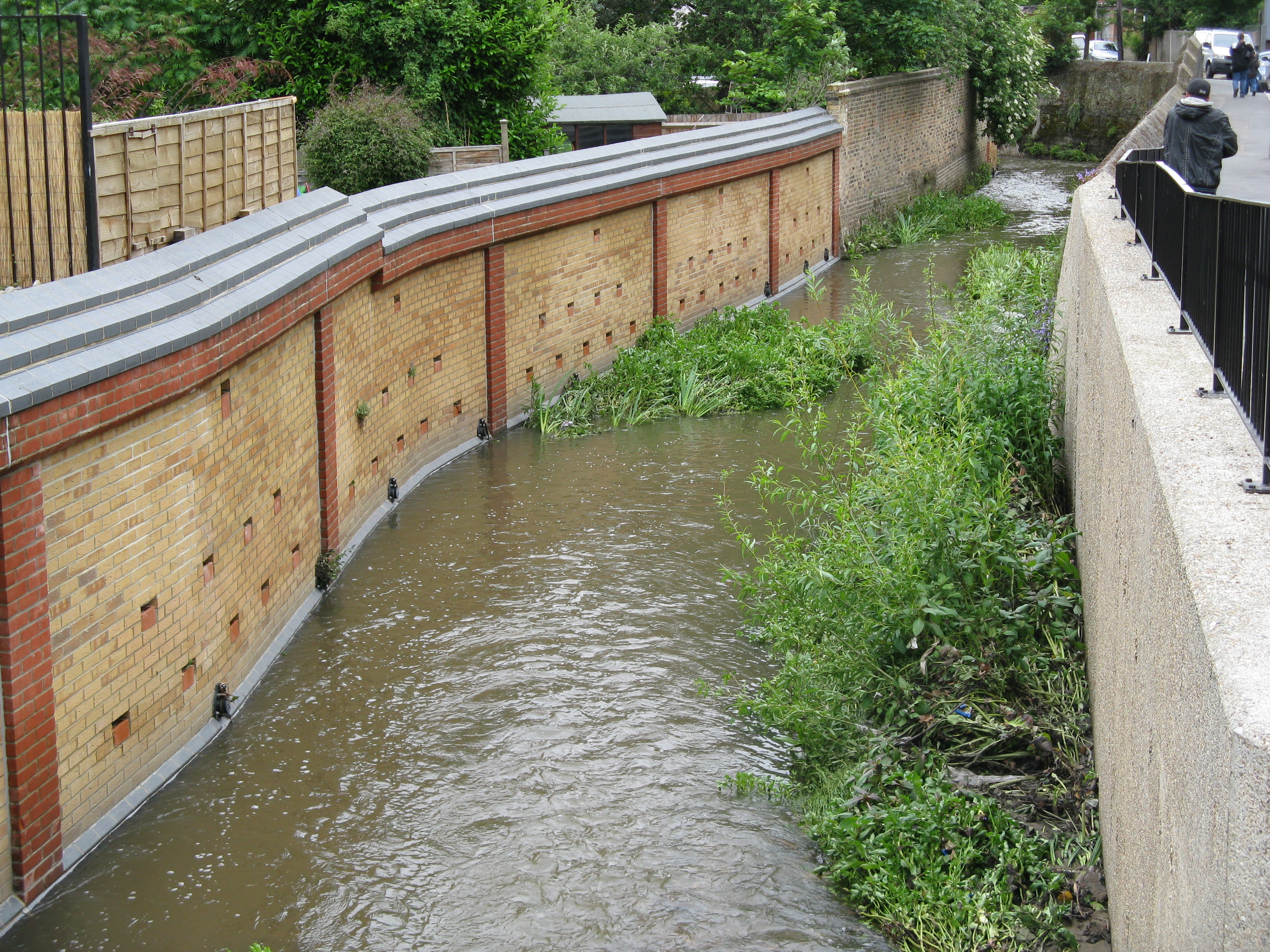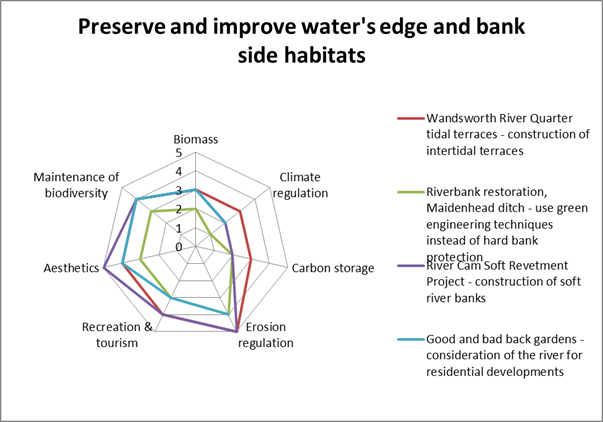These activities are intended to restore the habitats at the edge of the river channel in areas where it is impacted upon by hard structural bank protection. The activities are focussed on the channel margins, the banks and the riparian zone.
 A wide range of techniques are included in this environmental improvement, including the removal of hard bank protection, physical changes to the banks and channel margins so that they can support more diverse plant and animal communities, planting of suitable native species to help new habitats become established and improvement to bank top habitats.
A wide range of techniques are included in this environmental improvement, including the removal of hard bank protection, physical changes to the banks and channel margins so that they can support more diverse plant and animal communities, planting of suitable native species to help new habitats become established and improvement to bank top habitats.
Although the activities should be focussed on areas of hard bank protection, environmental improvements should be extended where opportunities allow (e.g. to regrade banks adjacent to hard protection).
Techniques
There are wide range of techniques that can be used to implement this environmental improvement, depending upon the type and characteristics of the water body in which it is going to be applied. These include:
- Removal of hard bank protection and reprofiling of banks to avoid the need for additional protection
- Removal of hard bank protection and replacement with a soft engineering technique that is suitable for the watercourse
- Planting of suitable native species to enhance existing habitats and crate new ones
- Creation of aquatic ledges beneath hard bank protection
- Create backwaters and online wetlands to increase habitat diversity
- Create buffer strips to improve or preserve riparian and bankside habitats
Benefits
Improvements to water's edge and bank side habitats can deliver a wide range of direct and indirect benefits, including:
- Direct benefits to plants, invertebrates, birds and animals which live on the banks and riparian zone
- Improvements to in-channel habitats for aquatic plants, fish and invertebrates
- Improvements to the physical habitat conditions of the watercourse, including the creation of a more natural bank profile and the creation of more varied habitat niches
- Restoration of natural processes, including erosion and deposition
- Improvements to the aesthetic value of the watercourse and improvements to its recreational value
Case Study Benefits
This diagram displays a comparison of benefits scores (using a high-level ecosystem service assessment methodology) associated with the techniques used in each case study. More details on the methodology can be found here.